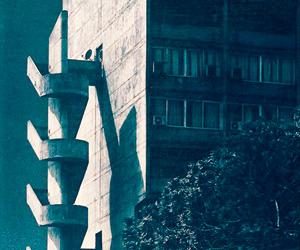Set for its fourth edition, the Dhaka Art Summit is keen on addressing contemporary issues in the country. Its artistic director, Diana Campbell Betancourt, shows us the significant developments to watch out for


Studies in Form-Akbar Bhavan-20 from a series of cyanotype prints by artist Seher Shah and photographer Randhir Singh
ADVERTISEMENT
A Summit can be anything you want it to mean, and we re-define it every time. Just when you think you have figured it out, we alter our course. You might think you know what the 2020 Dhaka Art Summit might look like, but we hope to add further surprise," says Diana Campbell Betancourt. At the age of 33, Betancourt is the third time artistic director of one of Asia's most important art events, the Dhaka Art Summit, set to open on February 2. Betancourt, who used to be based out of Mumbai, has been at the fore of bringing contemporary voices in art from Asia to the biennial event, which is now in its fourth edition. Joined by guest curators, Betancourt has brought over 300 artists across 10 curated exhibitions. We ask her what's different this time. Edited excerpts from the interview:
Bangladesh as centre
2017 was an important year as it marked 70 years of independence for both India and Pakistan. In 1947, however, what is now Bangladesh was still effectively a colony of Pakistan. Usually viewed as the poorer younger brother of these two countries, we saw the need to put Bangladesh back at the centre of its cartography. We want to shift the narrative away from India-Pakistan. We are looking at the trade and cultural connections that Bangladesh had with the Middle East and Southeast Asia, rather than only looking at South Asia. There are fewer Indian artists this time around, and we have more artists from Thailand and Myanmar and Singapore as we've shifted our focus further east. The Summit is not a nationalist exercise, so we are able to address the slippages across borders. We are also exhibiting one of Mrinalini Mukherjee's hemp sculptures in Bangladesh for the first time, through the support of the Kiran Nadar Museum of Art and the Mrinalini Mukherjee Foundation, which draws connections to Bangladesh via the jute and textile trades which interlink its history with the rest of the world.

Diana Campbell Betancourt. Pic/Noor Photoface
Making more room
This time we have extended the Summit from four days to nine. There was a lot of local demand the last time. We saw 1,38,000 visitors in 2016. This year, we have split the weekends for different kinds of crowds.
Special focus on Sri Lanka
We believe that just as Bangladesh is left out of global dialogue, Sri Lanka is even more excluded. The show, titled One Hundred Thousand Small Tales, is curated by Sharmini Pereira, and has 40 artists right from the 1940s to the present.
Headed in the right direction
The Solo Projects section, which used to invite commissions from leading artists in the region, is replaced by Bearing Points. I felt that the Solo Projects didn't intellectually tie together everything we do in the Summit. The exhibition is curated by me, and the title refers to a compass, to a map that helps you orient yourself to lesser explored transcultural histories of the region.
Going back to school
The Summit has always been known for its workshops. This edition will have a free art school, with sessions conducted by artists such as Rashid Rana and Dayanita Singh, among others. It will be right at the middle of the summit, emphasising that culture is a key part to keeping people secular.
Download the new mid-day Android and iOS apps to get updates on all the latest and trending stories on the go
 Subscribe today by clicking the link and stay updated with the latest news!" Click here!
Subscribe today by clicking the link and stay updated with the latest news!" Click here!






